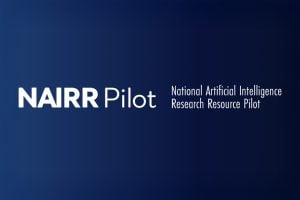
Two datasets from Johns Hopkins University have been selected to be among the 10 that the National Science Foundation will use to train innovative AI models.
The National Artificial Intelligence Research Resource (NAIRR) Pilot program, led by the NSF, will connect U.S. researchers and educators to AI resources—namely computation, data, software, models, training, and educational materials—to advance research, discovery, and innovation and to train an AI-literate workforce.
A group led by Charles Meneveau, the Louis M. Sardella Professor in Mechanical Engineering and an associate director of the Institute for Data Intensive Engineering and Science (IDIES), developed the Johns Hopkins Turbulence Database “to study turbulence interactively, on petabyte scales,” Meneveau says. “Users can place immersive virtual sensors into the simulated fields, which immediately send a data stream to the users about their environment, avoiding expensive and time-consuming large data downloads.”
The group has been collaborating with fluid dynamics researchers around the world for more than a decade to continue building the database in an open, interactive way that facilitates sharing, reuse, and accelerated discovery. JHTDB is a highly multidisciplinary IDIES effort funded mostly by NSF, joining experts from mechanical engineering, physics and astronomy, computer science, and applied mathematics.
The Phase-Field Fracture Simulation Dataset, which will be used to support the development of machine learning models to accelerate studies in fracture mechanics, was created in the Department of Civil and Systems Engineering by a team that includes Somdatta Goswami, assistant professor of civil and systems engineering, and Lori Graham-Brady, professor of civil and systems engineering, along with postdoctoral researcher Maryam Hakimzadeh.
“Our dataset applies to hyperelastic materials, or materials that can handle significant stress and deformation before returning to their original form, like a person’s skin or the rubber in your car tires,” says Goswami. “In terms of applications, hyperelastic materials have the potential to improve automotive components, medical devices, and even soft tissue repair.”
The dataset was chosen for its focus on materials with multiple cracks, rather than a larger, single crack, offering broader insight into the complex behavior of materials as they break down. The dataset will help users determine whether their machine learning models are robust enough for fracture mechanics applications. By making their data accessible, the team aims to support resource sharing and increase the speed of discovery within fracture mechanics.